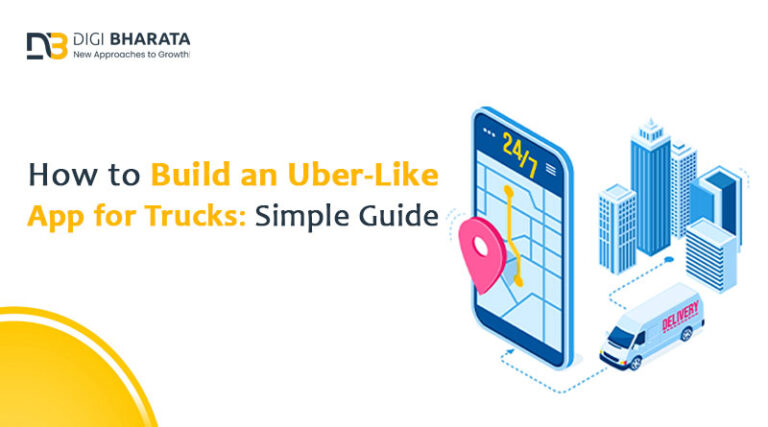In today’s tech-driven world, AI-powered applications are revolutionizing various industries, from healthcare to entertainment. One such app gaining significant attention is Candy.AI, a personal assistant that uses artificial intelligence to make users’ lives more efficient.
Whether you’re an entrepreneur looking to develop an AI-driven app or a business aiming to create a similar tool, this guide will walk you through the entire process of developing an app like Candy.AI.
What is Candy.AI?
Candy.AI is an advanced mobile app that uses artificial intelligence to help users manage tasks, make decisions, and streamline their daily activities. Through its machine learning algorithms, Candy.AI offers personalized recommendations, organizes to-do lists, and even handles calendar scheduling, making it an indispensable digital assistant.
As the demand for AI-powered mobile apps grows, building an app like Candy.AI can be a great opportunity. But developing an AI app requires careful planning, an understanding of the technology, and an efficient development process.
Steps to Develop an App Like Candy.AI
Developing an app like Candy.AI involves several key steps, from ideation to launch. Here’s a detailed breakdown of the entire process.
Step 1: Define the Purpose and Features of Your App
Before diving into the development process, it’s essential to define the purpose of your app and what features you want to include. Candy.AI offers personalized recommendations, integrates with various platforms, and simplifies day-to-day tasks. When creating your own AI assistant app, consider the following features:
- AI-Powered Personal Assistant: The core functionality should be an AI-based assistant capable of managing tasks, setting reminders, and providing smart recommendations.
- Natural Language Processing (NLP): The app should be able to understand and process user commands in natural language, making interactions more intuitive.
- Data Analytics: Integrating analytics tools will help your app learn from user behavior and improve over time.
- Cross-Platform Integration: Ensure that your app can sync across different devices and platforms like smartphones, tablets, and desktops.
- Voice Recognition: Adding voice recognition can enhance the user experience by allowing users to interact with the app hands-free.
Understanding these features and deciding which ones best suit your target audience is the first step in the app development journey.
Step 2: Conduct Market Research
Market research is critical to ensuring your app stands out in the competitive AI space. Look for gaps in the market or areas where your app can offer a unique value proposition. Analyze similar AI apps, such as Candy.AI, to identify strengths and weaknesses. Focus on understanding:
- User Needs: What are the common pain points that users experience? How can your app solve these issues?
- Competitor Analysis: What features do other AI assistant apps offer? How can you differentiate your app?
- Target Audience: Who will use your app? Are they tech-savvy millennials or business professionals looking for a productivity boost?
By understanding the market, you can ensure your app meets a clear demand and appeals to your target users.
Step 3: Choose the Right Technology Stack
Developing an app like Candy.AI requires a robust technology stack. Here are some key technologies that you may need:
- Artificial Intelligence and Machine Learning: Frameworks like TensorFlow, PyTorch, and Keras are essential for creating intelligent features, such as natural language processing (NLP), recommendation algorithms, and predictive analytics.
- Cloud Infrastructure: To handle large amounts of data and support AI algorithms, cloud services like AWS, Google Cloud, or Microsoft Azure are crucial for scalability and security.
- Programming Languages: Python is widely used in AI development due to its ease of use and rich library support. Java and Kotlin are preferred for Android app development, while Swift is recommended for iOS apps.
- Backend Framework: Node.js, Django, or Ruby on Rails are popular choices for developing the backend of your app.
- Databases: You may need a NoSQL database like MongoDB or Firebase for storing user data and application metrics.
Selecting the right technology stack ensures the app is scalable, secure, and capable of handling AI-powered features efficiently.
Step 4: Design a User-Friendly Interface
The user interface (UI) and user experience (UX) are crucial for the success of your app. Candy.AI is known for its sleek, intuitive interface that makes it easy for users to navigate through various tasks. When designing your app, focus on the following:
- Simple Navigation: Make sure the app is easy to use with clear, straightforward menus.
- Interactive Design: Incorporate interactive features like chatbots or voice assistants that respond to user inputs in a human-like manner.
- Consistency: Ensure consistency in design elements across the app, including icons, colors, fonts, and layout.
- Personalization: Allow users to personalize their app experience by setting preferences, reminders, and more.
A clean, user-friendly design is key to retaining users and ensuring they have a positive experience while using your app.
Step 5: Develop and Integrate AI Features
The backbone of your app will be its AI features. Here are some key AI functionalities you need to integrate:
- Natural Language Processing (NLP): NLP allows your app to understand and process user input in a natural, conversational way. Tools like Google Dialogflow, Amazon Lex, or Microsoft LUIS can help you build sophisticated NLP systems.
- Machine Learning (ML): Use machine learning to analyze user behavior and provide personalized recommendations, smart suggestions, or predictive capabilities.
- Voice Recognition: Integrate voice recognition technology to allow hands-free interaction with the app. APIs from Google or Amazon can help with this feature.
- Data Analytics: By using analytics tools, you can track user behavior and adjust the AI’s recommendations accordingly to improve the overall user experience.
Building these AI features will make your app more intelligent, responsive, and useful to users.
Step 6: Test the App
Before launching the app, thorough testing is necessary to ensure everything works as expected. Conduct the following tests:
- Unit Testing: Check individual components of the app, such as AI algorithms, voice recognition, and UI elements.
- Integration Testing: Test how the app components work together to ensure smooth operation.
- User Testing: Gather feedback from real users to see how they interact with the app and identify any areas for improvement.
- Security Testing: Make sure user data is secure and that the app complies with privacy regulations like GDPR.
Testing is critical to ensure your app is bug-free, reliable, and ready for launch.
Step 7: Launch and Market the App
Once the app is tested and ready, it’s time to launch it in app stores like Google Play and the Apple App Store. But launching an app isn’t enough—you need a robust marketing strategy to promote it. Here are some effective ways to market your AI app:
- App Store Optimization (ASO): Optimize your app listing with relevant keywords, compelling descriptions, and engaging visuals to improve discoverability.
- Social Media Marketing: Use platforms like Instagram, Facebook, and Twitter to generate buzz and engage with potential users.
- Influencer Partnerships: Collaborate with tech influencers or bloggers to promote your app.
- Content Marketing: Create informative blog posts, videos, or tutorials to educate users about your app’s features and benefits.
A strong marketing strategy will help your app gain traction and attract more users.
How Much Does It Cost to Develop an App Like Candy.AI?
The cost of developing an AI-powered app like Candy.AI can vary depending on factors such as complexity, features, design, and development team location. On average, the cost to build an AI app ranges from $50,000 to $200,000, with more complex features like voice recognition or machine learning pushing the price higher.
Factors that influence the cost include:
- App Features: More features, such as personalized recommendations, voice integration, and machine learning, will increase development costs.
- AI Integration: Building and training machine learning models requires specialized skills and can be costly.
- Development Time: The more time it takes to develop the app, the higher the cost.
- Development Team Location: Development costs can vary depending on whether you hire a local team or outsource to offshore developers.
It’s essential to plan your budget accordingly and choose a development team with expertise in AI and app development.
Conclusion
Building an app like Candy AI can be an exciting and rewarding project, but it requires careful planning, the right technology stack, and a deep understanding of AI. By following the steps outlined in this guide, you can create a smart, user-friendly app that helps users manage tasks and improve their daily lives. Remember to conduct market research, choose the right AI features, and test your app thoroughly before launching it. With the right approach, your AI-powered app can become the next big thing in the tech world.
Are you ready to bring your AI app idea to life? Start planning today and turn your vision into reality!
FAQs
Q1. Is there a free Candy.AI?
Ans: While Candy.AI does offer a free trial for users to explore its features, the full version typically requires a subscription or a one-time payment. The free trial allows you to experience the core functionalities of the app, but certain premium features may be locked behind a paywall.
Q2. What is Candy.AI used for?
Ans: Candy.AI is a personal assistant app powered by artificial intelligence. It is designed to help users manage tasks, set reminders, organize schedules, and provide smart recommendations. The app can also handle voice interactions, make decisions based on user input, and streamline daily activities, improving overall efficiency.
Q3. Is there a free AI girlfriend?
Ans: While there are AI apps that simulate conversations and companionship, including virtual “girlfriend” experiences, most of these apps offer limited features for free, with more advanced capabilities available through paid versions. These AI companions are often used for entertainment or to provide users with conversational partners, but they aren’t intended to replace real-life relationships.
Q4. Does Candy.AI cost money?
Ans: Yes, Candy.AI generally costs money. After the free trial, users need to pay for a subscription or one-time payment to access the full set of features. Pricing may vary depending on the plan chosen, and the cost typically reflects the advanced AI-powered capabilities and personalized services the app provides.
Source Links:
https://www.lachief.io/tool-posts/candy-ai
https://aitoptools.com/tool/candy-ai/
https://theresanai.com/candy-ai
https://www.yeschat.ai/blog-candy-ai-review-new-characters-phone-calls-spicy-images-2024-46475
https://anakin.ai/blog/candy-ai-review/
https://medium.com/@melissacrooks/how-much-does-ai-app-development-cost-fbb366d68364




















+ There are no comments
Add yours